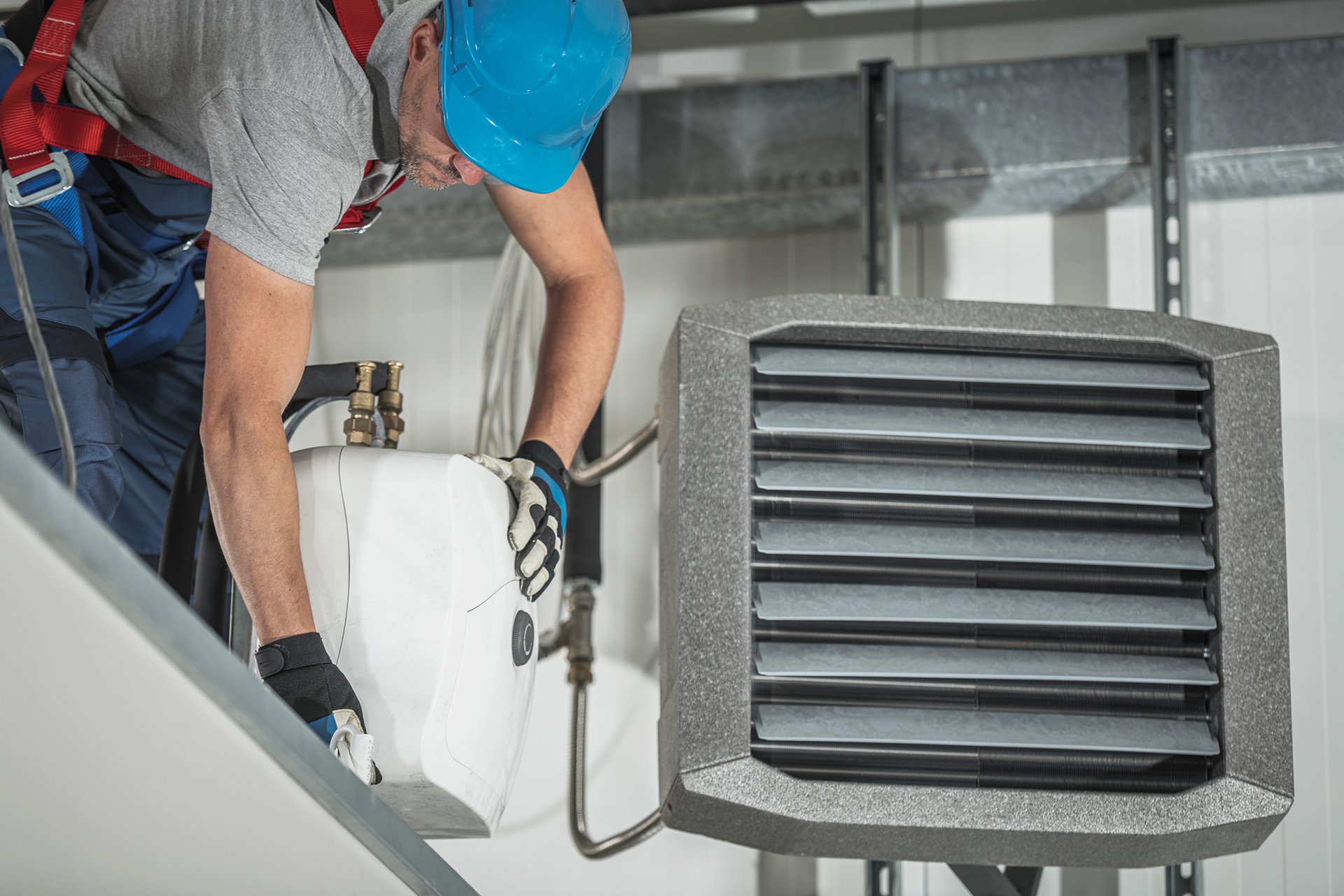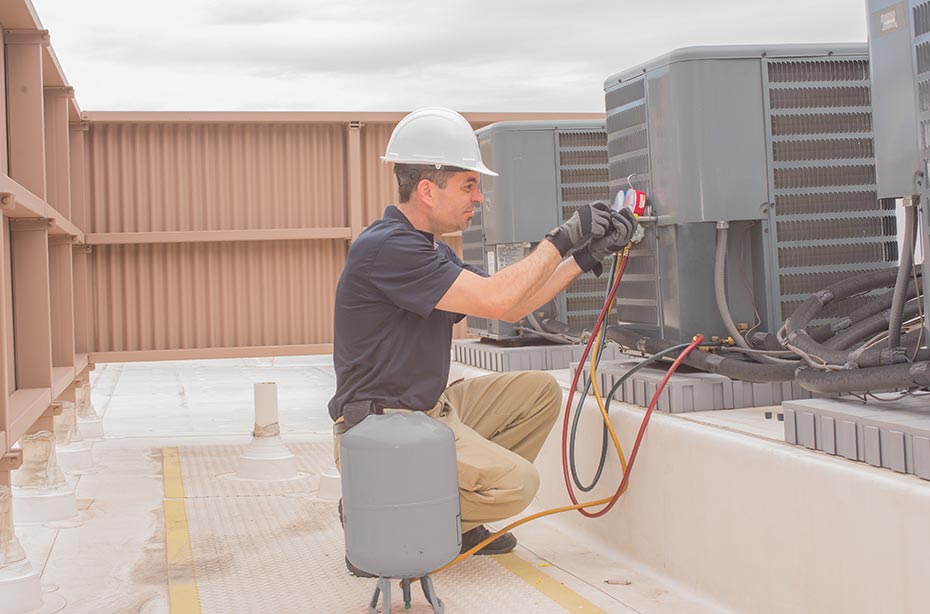Is a furnace replacement Worth It?
Is a furnace replacement Worth It?
Blog Article
Just How a Warm Pump and Furnace Interact to Enhance Your Home's Heating Performance
Comprehending how a heatpump and heating system interact is important for house owners seeking efficient home heating options. Each system has its staminas, offering a balanced approach to home comfort. The heatpump excels in modest temperatures, while the furnace provides rapid heat during severe cold. This harmony not only reduces energy prices however additionally improves the life-span of both home appliances. What factors influence this cooperation, and exactly how can homeowners maximize their advantages?
Understanding Heat Pumps: Exactly How They Function
Lots of individuals may be strange with their internal operations, warmth pumps play an essential duty in modern heating systems. These tools run by moving warmth from one area to another, utilizing the principles of thermodynamics. In colder months, a warmth pump removes warm from the outdoors air, ground, or water, and transfers it inside to warm the living space. Alternatively, during warmer months, it can reverse the process, functioning as an ac system by getting rid of warm from inside to the outside.Heat pumps contain an evaporator, condenser, compressor, and growth valve. The refrigerant within the system takes in warmth as it evaporates at reduced temperatures and stress. The compressor after that raises the stress and temperature level of the refrigerant, allowing it to launch warm as it condenses. This efficient process can substantially minimize energy consumption contrasted to traditional heating approaches, making heat pumps a sustainable selection for environment control in homes.
The Duty of Heaters in Home Home Heating
Furnaces play a necessary role in home heating by offering a dependable resource of warmth throughout the colder months. They run by producing warmth through combustion or electric resistance, dispersing it throughout the home through air ducts or radiant systems. The efficiency of a heating system is frequently gauged by its Annual Gas Usage Efficiency (AFUE) rating, which indicates exactly how properly the system transforms fuel right into heat.Furnaces can make use of different power resources, including gas, power, oil, or propane, allowing homeowners to pick the most appropriate alternative for their demands. Unlike heatpump, which may have a hard time in extreme cool, heating systems maintain regular efficiency, ensuring that indoor temperature levels continue to be comfortable regardless of outside problems. In addition, modern heaters frequently come furnished with sophisticated innovation, such as clever thermostats and variable-speed blowers, boosting their performance and responsiveness. This convenience makes furnaces an important component in all-encompassing home heating approaches.

Benefits of Using Both Solutions Together
Incorporating the toughness of both heaters and heat pumps can bring about an extra efficient and effective home heating remedy. Using both systems permits home owners to make the most of the heatpump's energy performance during milder temperature levels while depending on the furnace for more severe cold problems. This double strategy can considerably minimize energy prices, as heatpump eat much less electrical power than typical home heating methods when temperatures are moderate.Additionally, using both systems with each other can enhance convenience degrees in the home. Heat pumps can offer regular, even heating, while furnaces can promptly elevate ambient temperatures when needed. Moreover, the assimilation of both systems can prolong the life-span of tools by decreasing damage on each unit, as they share the work. Inevitably, home owners can delight in a well balanced, cost-effective heating option that adjusts perfectly to differing climate condition, guaranteeing a warm and inviting home throughout the winter season months.
How Warm Pumps and Furnaces Enhance Each Various Other
When property owners integrate heatpump and furnaces, they produce a corresponding furnace that optimizes efficiency and convenience. Warm pumps operate by moving heat from the outside air or ground, making them extremely reliable in modest environments. They stand out throughout milder temperatures, supplying economical heating. Alternatively, heating systems produce warmth with combustion or electric resistance, supplying strong, immediate warmth throughout extreme cold conditions.The combination of these two systems enables dynamic modifications based on temperature variations. During warmer months or milder winter season days, the heatpump can take the lead, preserving power and decreasing prices. As temperatures decline, the furnace can perfectly engage, making sure consistent warmth throughout the home. This synergy not only enhances power use yet also enhances the life expectancy of both systems, as each unit operates within its excellent performance range. Together, they produce a well balanced environment that adapts to varying climate demands.
Maximizing Performance: Tips for Homeowners
House owners can enhance their heating efficiency with numerous useful approaches. Establishing a regular upkeep routine, incorporating wise thermostat modern technology, and carrying out efficient insulation and securing services are key steps. These procedures not only improve comfort yet additionally decrease energy costs.
Regular Maintenance Set Up
To ensure optimal home heating effectiveness, establishing a routine upkeep routine is necessary for any kind of home. Home owners ought to focus on routine inspections of both heat pumps and furnaces to identify peak efficiency. This includes changing air filters every one to 3 months, as clogged up filters can substantially reduce efficiency. Additionally, scheduling specialist maintenance a minimum of yearly allows specialists to determine and deal with prospective concerns before they intensify. Property owners need to additionally clean the heatpump's outdoor unit to stop debris buildup that can impede airflow. By adhering to a normal maintenance routine, home owners not only enhance their furnace' effectiveness but likewise prolong their lifespan, causing greater comfort and decreased power costs throughout the colder months.
Smart Thermostat Assimilation
Incorporating a smart thermostat right into a home furnace can substantially boost energy efficiency, specifically as it permits for accurate control over temperature setups. These devices can find out the home owner's routine and preferences, instantly readjusting the temperature to optimize convenience while reducing energy usage. They can decrease home heating during times when the home is vacant, decreasing unneeded usage. Several smart thermostats likewise give real-time power usage information, making it possible for homeowners to make educated decisions concerning their heating practices. In addition, remote accessibility via smart device apps permits individuals to readjust setups from anywhere, guaranteeing the home is cozy upon return. On the whole, clever thermostat combination not only boosts convenience but significantly adds to power cost savings and performance.
Insulation and Securing Solutions
Smart thermostats play a critical duty in energy performance, yet their efficiency can be substantially enhanced by proper insulation and securing solutions. House owners need to focus on shielding floorings, wall surfaces, and attics to decrease warmth loss. Premium insulation products, such as spray foam or fiberglass, can significantly improve thermal resistance. Additionally, securing voids around doors, air ducts, and home windows stops cold air seepage and warm retreat. Weatherstripping and caulking work methods for dealing with these leakages - heat pump replacement ooltewah tn. Normal evaluations for air leaks, together with using blower door examinations, can help recognize problem locations. By purchasing insulation and securing, home owners can maximize the efficiency of their heating unit, eventually resulting in lowered energy intake and reduced energy bills
Typical Misconceptions About Heat Pumps and Furnaces
What misunderstandings surround heat pumps and heaters? Numerous people incorrectly think that heatpump are inadequate in cooler environments. In truth, modern heat pumps are developed to run efficiently even in reduced temperatures, supplying dependable heating throughout winter season. One more typical myth is that heaters are always much more efficient than warm pumps. Nevertheless, this depends on the certain energy resources and effectiveness scores of the units concerned. Some might likewise believe that making use of both systems simultaneously is unnecessary, yet as a matter of fact, this combination can maximize heating performance, especially during extreme climate condition. Additionally, people usually assume that heatpump call for constant upkeep, when actually, they have similar maintenance requires to conventional heating unit. By unmasking these myths, property owners can make even more informed choices concerning their home heating alternatives, inevitably causing boosted comfort and energy efficiency in their homes.
Maintenance Considerations for Combined Solutions

Often Asked Concerns
Can Warmth Pumps Work Effectively in Incredibly Cold Climates?
Warm pumps can struggle in exceptionally chilly environments as a result of decreased performance and warmth extraction restrictions. However, improvements in modern technology have resulted in models made for better efficiency in such conditions, improving their practicality in harsh settings.
For How Long Do Heat Pumps and Furnaces Usually Last?
Heatpump usually last 15 to 20 years, while heating systems have a life expectancy of 15 to 30 years. Normal upkeep can expand their durability, guaranteeing effective procedure and reducing the need for premature substitutes.

What Is the Typical Expense of Installing Both Solutions?
The typical cost of installing both a heat pump and a heating system generally ranges between $5,000 to $10,000 - furnace replacement. Aspects affecting this expense consist of system dimension, setup complexity, and local labor rates
Exist Tax Obligation Rewards for Making Use Of Energy-Efficient Heating Solutions?
Lots of home owners ask about tax obligation rewards for energy-efficient home heating systems. Numerous government and state programs usually use rebates or credit scores, urging the fostering of lasting innovations to decrease power usage and advertise ecological duty.
Exactly how Do I Pick the Right Size Warmth Pump and Heating System?
Choosing the right size warm pump and furnace includes calculating the home's square footage, considering insulation high quality, and reviewing local environment. Consulting an expert can ensure ideal system performance and power performance based upon certain requirements. heat pump replacement ooltewah tn. Comprehending just how a heat pump and furnace work with each other is crucial for home owners looking for reliable heating services. In chillier months, a heat pump extracts heat from the outside air, ground, or water, and transfers it inside to warm up the living area. When home owners incorporate warm pumps and furnaces, they produce a corresponding heating system that makes best this website use of efficiency and convenience. Warmth pumps run by moving warmth from the outside air or ground, making them very efficient in moderate climates. Warm pumps can battle in incredibly cool climates due to decreased performance and heat removal constraints
Report this page